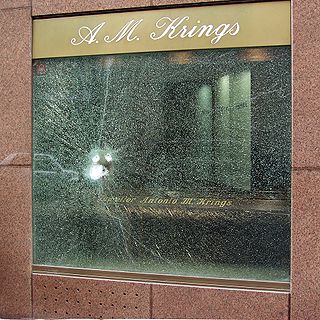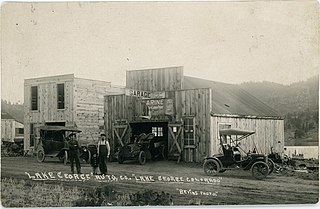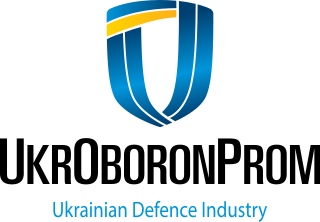
Armour or armor is a covering used to protect an object, individual, or vehicle from physical injury or damage, especially direct contact weapons or projectiles during combat, or from a potentially dangerous environment or activity. Personal armour is used to protect soldiers and war animals. Vehicle armour is used on warships, armoured fighting vehicles, and some combat aircraft, mostly ground attack aircraft.

A bulletproof vest, also known as a ballistic vest or bullet-resistant vest, is a type of body armour designed to absorb impact and prevent the penetration of firearm projectiles and explosion fragments to the torso. The vest can be either soft—as worn by police officers, security personnel, prison guards, and occasionally private citizens to protect against stabbing attacks or light projectiles—or hard, incorporating metallic or para-aramid components. Soldiers and police tactical units typically wear hard armour, either alone or combined with soft armour, to protect against rifle ammunition or fragmentation. Additional protection includes trauma plates for blunt force and ceramic inserts for high-caliber rounds. Bulletproof vests have evolved over centuries, from early designs like those made for knights and military leaders to modern-day versions. Early ballistic protection used materials like cotton and silk, while contemporary vests employ advanced fibers and ceramic plates. Ongoing research focuses on improving materials and effectiveness against emerging threats.

Isuzu Motors Ltd., commonly known as Isuzu, is a Japanese multinational automobile manufacturer headquartered in Yokohama, Kanagawa Prefecture. Its principal activity is the production, marketing and sale of Isuzu commercial vehicles and diesel engines.

Bulletproof glass, ballistic glass, transparent armor, or bullet-resistant glass is a strong and optically transparent material that is particularly resistant to penetration by projectiles, although, like any other material, it is not completely impenetrable. It is usually made from a combination of two or more types of glass, one hard and one soft. The softer layer makes the glass more elastic, so that it can flex instead of shatter. The index of refraction for all of the glasses used in the bulletproof layers must be almost the same to keep the glass transparent and allow a clear, undistorted view through the glass. Bulletproof glass varies in thickness from 3⁄4 to 3+1⁄2 inches.

Auto detailing is an activity that keeps the vehicle in its best possible condition, primarily cosmetic, as opposed to mechanical. Detailing is achieved by removing visible and invisible contaminants from the vehicle's interior and polishing the exterior to its original blemish-free finish. The fundamental detail options include an exterior wash and wax, interior vacuuming, window cleaning, and surface polishing.

A knock-down kit is a collection of parts required to assemble a product. The parts are typically manufactured in one country or region, and then exported to another country or region for final assembly. CBU, on the other hand, stands for "Completely Built Up" and signifies import of a finished product.

Iran’s automotive industry is the third most active industry of the country, after its oil and gas industry, accounting for 10% of Iran's GDP and 4% of the workforce.
The Kaiser-Frazer Corporation was an American automobile company. It was founded jointly by industrialist Henry J. Kaiser and automobile executive Joseph W. Frazer. In 1947, the company acquired the automotive assets of Graham-Paige, of which Frazer had become president near the end of World War II. Kaiser-Frazer was one of a few US automakers to achieve success after World War II, if only for a few years. Joseph W. Frazer left the company in 1949, replaced as president by Henry's son Edgar F. Kaiser.
The automotive industry in India is the world's fourth-largest by production and valuation as per 2022 statistics. As of 2023, India is the 3rd largest automobile market in the world in terms of sales.

The United States presidential state car is the official state car of the president of the United States.

An automobile repair shop is an establishment where automobiles are repaired by auto mechanics and technicians. The customer interface is typically a service advisor, traditionally called a service writer.
Centigon is a division of the Centigon Security Group. The company traces its roots back to coach builder Sayers & Scovill, later Hess & Eisenhardt and then O'Gara-Hess & Eisenhardt.

A VIP armored car is a civilian vehicle with a reinforced structure that is designed to protect its occupants from assaults, bullets and blasts. Armored cars are typically manufactured with bulletproof glass and layers of armor plating, often with a variety of other defensive mechanisms and features to aid the individuals inside. Unlike military armored vehicles, a civilian armored car is designed to be inconspicuous and similar to its factory version.

An armored vehicle is an armored van or truck used to transport valuables, such as large quantities of money or other valuables, especially for banks or retail companies. The armored car is typically a multifunctional vehicle designed to protect and ensure the wellbeing of the transported contents and guards. Typically customized on a basic van or truck chassis, they feature bullet-resistant glass, armor plating, and reinforced shells and cabs. Armored cars are designed to resist attempts at robbery and hijacking, being able to withstand bullets from most handguns and rifles, as well as extreme degrees of heat, explosives, and collisions.
EN 1063, or CEN 1063, is a security glazing standard created by the European Committee for Standardization for measuring the protective strength of bullet-resistant glass. It is commonly used in conjunction with EN 1522 to form a ballistic classification system by which armored vehicles and structures are tested and rated. A similar classification system primarily used in the United States is NIJ Standard 0108, the U.S. National Institute of Justice's Standard for Ballistic Resistant Protective Materials which includes glass and armor plate.
Akrep ("Scorpion") is a Turkish infantry mobility vehicle developed by Otokar Otobus Karoseri Sanayi AS. The first prototypes were completed in May 1993 and the first vehicles came off the production line in June 1994. In addition to light reconnaissance, the vehicles were used for escort, perimeter control, counterinsurgency, and light attack. The Akrep represented the latest offering in Otokar's portfolio of light vehicles for both civilian and military markets.

The automotive industry in Japan is one of the most prominent and largest industries in the world. Japan has been in the top three of the countries with the most cars manufactured since the 1960s, surpassing Germany. The automotive industry in Japan rapidly increased from the 1970s to the 1990s and in the 1980s and 1990s, overtook the U.S. as the production leader with up to 13 million cars per year manufactured and significant exports. After massive ramp-up by China in the 2000s and fluctuating U.S. output, Japan is currently the third largest automotive producer in the world with an annual production of 9.9 million automobiles in 2012. Japanese investments helped grow the auto industry in many countries throughout the last few decades.

The Tigr is a Russian 4×4 multipurpose all-terrain infantry mobility vehicle manufactured by Military Industrial Company, first delivered to the Russian Army in 2006.

The Mahindra Rakshak (Protector) is an armored military light utility vehicle made by Mahindra Defense Systems, based on the chassis of the Mahindra Commander jeep. Primarily used by the Indian army, it is also used by other countries and police in numerous Indian States. The Rakshak is being replaced with the Mahindra Armored Light Specialist Vehicle (ALSV) chosen as its successor.

The defense industry of Ukraine is a strategically important sector and a large employer in Ukraine. Before the start of the War in Donbas, it was mostly used as part of Ukraine’s arms export market. However, it has leaned significantly towards increased Ukrainian military procurement since then.














